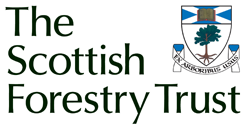May 2025. Trefor Owen

What is the 'day job?'
After retiring in 2023 as the Director of Land Management and Regions in Forestry and Land Scotland, I have no proper ‘day job’! I am ‘recreationally employed,’ mainly in regulatory governance for the Welsh Government, Westminster Government and a Local Authority.
What do you do outside of the Trust?
I am a Trustee of Lantra (developing training and qualifications to enhance careers in the land-based and environment sector throughout the UK and Ireland) and a large charity in Ynys Mon (Isle of Anglesey) that empowers communities for positive change. I also enjoy helping to keep people safe as a volunteer HM Coastguard Rescue Officer, and spending more time with family and travelling.
How long have you been involved with The Scottish Forestry Trust?
I joined The Scottish Forestry Trust on 1 January 2023.
Why did you become a Trustee?
I have always been passionate about forestry research, education and training. I recognised that the Trust plays a vital role in providing opportunities for learning – especially amongst early career forestry professionals and researchers. This is at a time when public sector funding for research, education and training is becoming more challenging. Therefore, we need to find new and collaborative ways of getting things done. I was also eager to see the Trust extend its reach into Wales and England (we cover the whole of the UK), especially as more and more ‘non-forestry’ universities and researchers are getting involved and interested in forestry-related activity and research.
How do you view the role of a board member? What motivates you?
The responsibilities of a charity board member are similar in many ways to those of a board member in other sectors. We are bound by Scottish charity law and regulated by the Scottish Charity Regulator (OSCR). I find that my background as an experienced public sector and third sector board member can be helpful to push the boundaries when we explore new opportunities, whilst still fully complying with our charitable aims and remit.
What do you bring to the Trust?
I bring many decades of policy and management experience in forestry and land management across Great Britain and beyond. I also understand the vital role of research, education and training in evidence-based policy development and sustainable forest management. I also bring new insights into regulatory governance and performance management.
What do you gain from involvement with the Trust?
I get a real buzz from seeing how our support can go a long way or make a real difference to those who think we can help with forestry research, education and training priorities. This has been evidenced by the two Bursary Symposia (2023 and 2025) the Trust has hosted in partnership with the University of Stirling. I believe our work in convening, listening, advising and connecting people is greatly valued by those who are destined to be tomorrow’s leaders. I also enjoy working with a really talented bunch of Trustees and our Executive Director, who bring a wide range of skills, knowledge and experience, as well as good humour, to the work of the Trust.
In your opinion, what are the most important challenges and opportunities facing the Trust?
The most important challenge and opportunity is to ensure we increase our means and capacity over the long term to support even more projects and activities across the UK. To do this, we need to engage and persuade more investors to invest in the Trust’s work, as well as encourage more people to come forward with innovative and investable ideas and proposals.
Looking ahead, what are you most excited about over the next 12 months?
I’m really looking forward to exploring new partnering and funding opportunities. This means being more proactive in extending our reach, as well as balancing our risk appetite with capturing more benefits and better outcomes for forestry in the UK.
